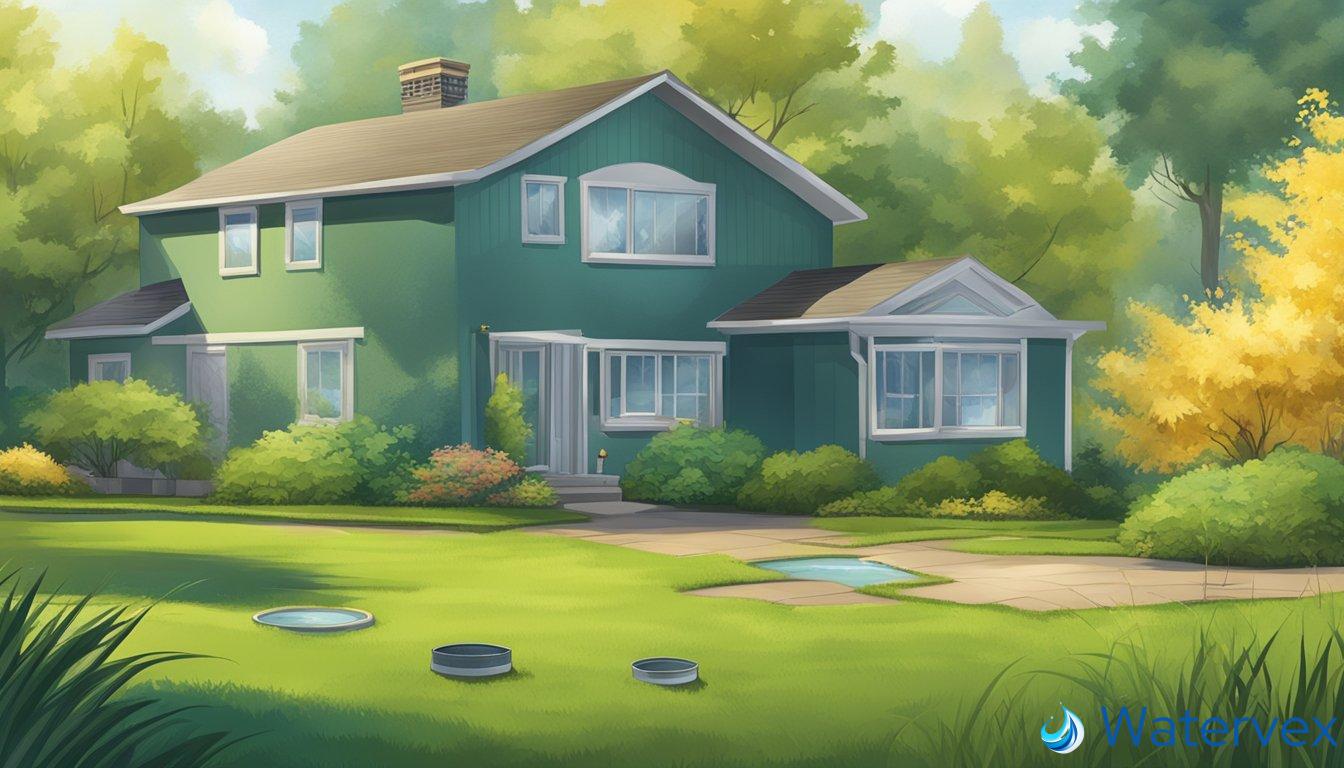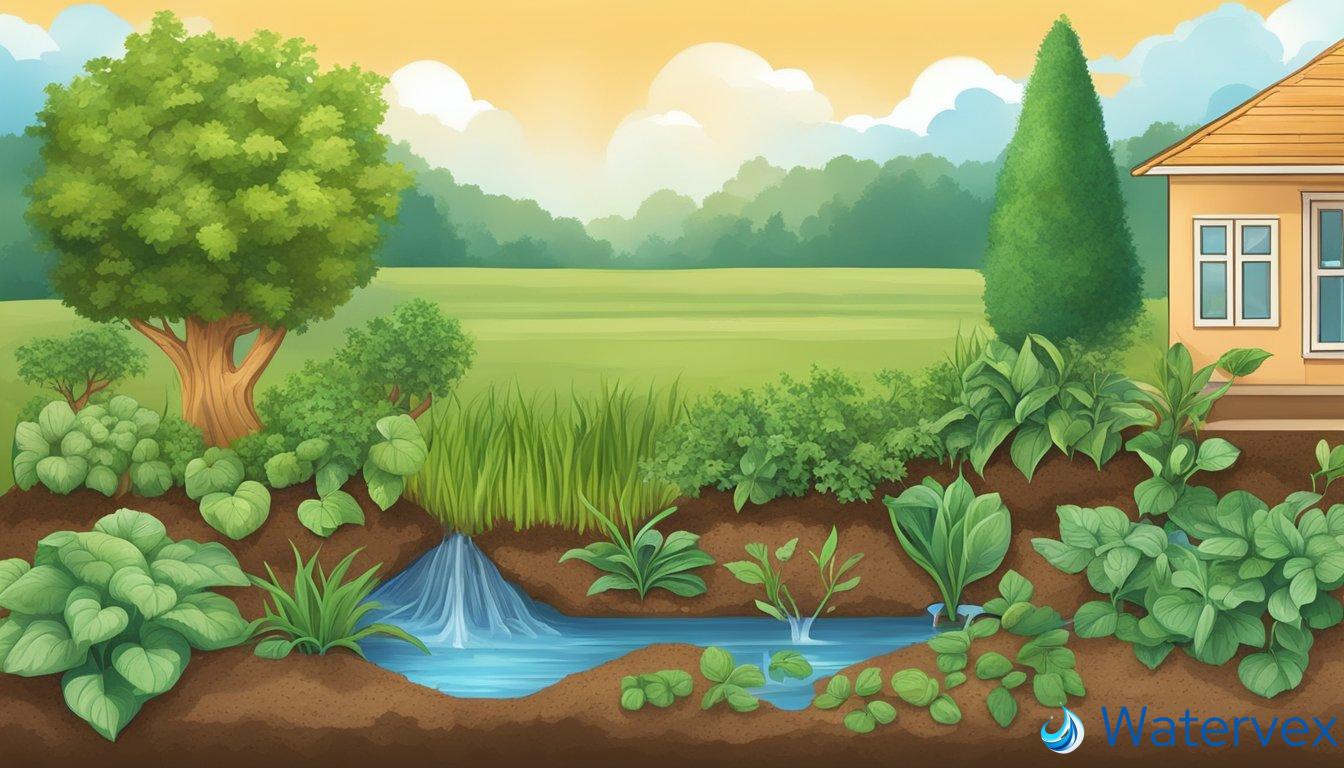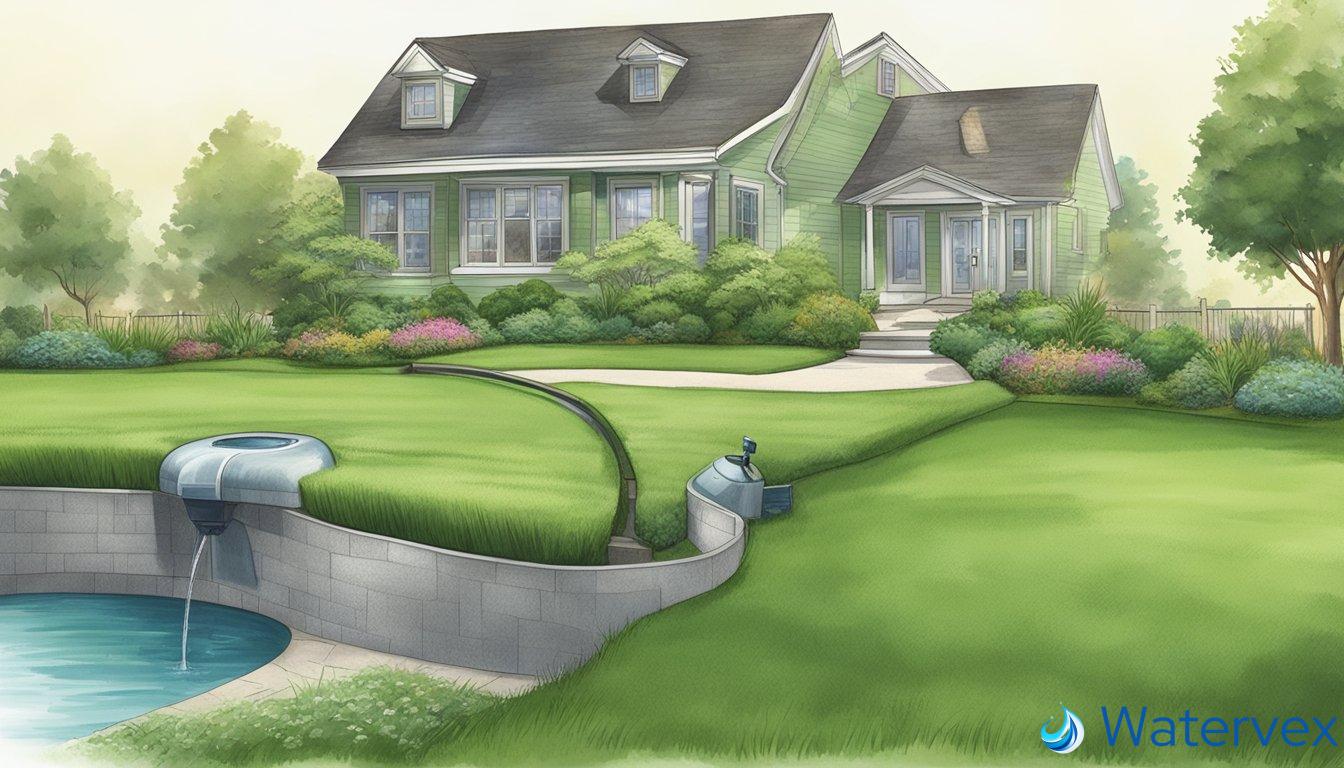Water usage and lawn care are common concerns for homeowners, especially when considering the impact of a water softener’s discharge on grass. A water softener removes minerals from water, particularly calcium and magnesium that make water ‘hard’. This process often introduces a significant amount of sodium into the water, which can affect soil and plant health when used for irrigation. If you’re concerned with maintaining a lush, healthy lawn, understanding the potential effects of watering your grass with softened water is crucial.

Managing a garden requires attention to detail, and the choice of water can make a big difference. The salt commonly used in water softeners, while beneficial for preventing mineral build-up in home appliances, can be detrimental to the delicate balance of your soil’s ecosystem. As softened water percolates through the soil, it may lead to increased soil salinity which can hinder grass from absorbing necessary nutrients. Additionally, the effects of this could become more pronounced if the water softener discharge is concentrated in a particular area.
Key Takeaways
- Softened water can introduce high levels of sodium into the soil, potentially impacting grass health.
- Elevated soil salinity from water softener discharge may inhibit nutrient uptake in grass.
- Concentrated discharge areas could see more pronounced negative effects on lawn health.
Effects of Water Softener Salt on Lawns
Exploring the relationship between water softener salt and lawn health reveals critical insights into maintaining a vibrant garden. Let’s investigate the impact on your grass and the steps you can take to protect your green space.
Can Softened Water Affect Grass Health?
Softened water typically contains higher levels of sodium ions, which are introduced during the ion exchange process to remove minerals like calcium and magnesium. This elevated sodium content can have a detrimental effect on lawns. For instance, it can lead to the yellowing of grass blades and potentially damage the overall health of your lawn. Soil structure can also be affected, as excessive sodium can displace other essential nutrients and degrade the soil’s ability to retain water, leading to a less hospitable environment for plants.
Furthermore, the chloride that is often a component of water softener salt can accumulate in the soil. Over time, this can reach levels that are toxic to plant roots, causing harm to the grass and garden vegetation. It’s akin to how over-salted food can dehydrate and harm our bodies—the same principle applies to your lawn.
What Precautions Should Homeowners Take When Using Softened Water for Irrigation?
To mitigate the risks of using softened water on lawns, there are a few precautions you can implement:
Dilution: Mix softened water with rainwater or untreated water to lower the sodium concentration.
Regular soil testing: Monitor sodium and chloride levels to prevent buildup that could harm your lawn.
Plant selection: Opt for salt-tolerant species that can withstand higher sodium levels.
Remember, responsible use of water softeners and awareness of their output can save you from the silent creep of soil degradation. While the water softener salt might pose a risk, strategic planning ensures your lawn stays lush and healthy.
Watering Your Garden with Softened Water

When you’re eyeing that sleek water softener system, it’s understandable to ponder how this might affect your cherished backyard oasis. After all, the mission is clear: keep the grass green and garden thriving without unintended consequences.
Softened water, which has had excess minerals like calcium and magnesium swapped out for sodium, enters the fray here. You may enjoy how this type of water nixes the issues of scale in your pipes, but let’s talk about its effects on your greenspace. Imagine that sprinkler system dousing your lawn with softened water; might this be a covert grass assassin? The short answer: not quite, but caution is advised.
- Sodium Levels: An uptake in sodium can spell trouble for plant health. It can escalate to the point where your plants are trying to absorb water, but the high sodium makes it an uphill battle—kind of like trying to run through a sandstorm.
- Irrigation Concerns: If your irrigation system is using softened water frequently, the question isn’t if it will have an impact, but when.
The story shifts when you introduce fertilizer or nutrients into the mix. While these additions aim to support your garden, they often contain sodium too! It’s like throwing more logs onto the sodium bonfire.
Here’s what you can do:
- Test Your Soil: Check for sodium levels before giving your lawn a softened water shower.
- Splash Sparingly: If softened water is your only option, limit its use. Moderation is key.
Ultimately, the dance with softened water and your garden comes down to balance and knowing the cast of characters beneath the surface of your soil. Keep those nutrients in check, watch your watering habits, and you’ll be more choreographer than spectator in the ballet of backyard harmony.
Managing Soil Quality and Plant Health

Soil quality is pivotal for a robust lawn, acting as the foundation for nutrient absorption and root stability. To avoid the saline impact of water softener discharge, first consider irrigation practices that dilute its concentration. A well-irrigated lawn ensures that mineral deposits don’t accumulate and impede grass roots.
A key practice is aeration. This process involves making small holes in the soil to allow air, water, and nutrients to penetrate the grass roots. It helps prevent nutrient deficiency and tackles issues such as compaction which can lead to stunted growth.
The health of your soil goes hand-in-hand with the balance of minerals present. Too much sodium from softened water can disrupt this balance. So, assess the soil’s composition; add mineral-rich fertilizers judiciously to compensate for potential imbalances caused by sodium. When it comes to grass, slight to moderate amounts of softened water can be tolerated, but consistent application can be detrimental over time.
| Soil Management Practices | Description |
|---|---|
| Aeration | Promotes root growth |
| Dilution | Reduces mineral buildup |
| Fertilization | Replenishes nutrients |
Remember, your lawn’s resilience is a reflection of the underlying soil health. By giving it the right care, you can mitigate the effects of softened water and maintain a vibrant, green lawn. Keep track of irrigation patterns and adjust as required—your grass will thank you for the attention to its needs.
Maintenance and Alternatives to Softened Water for Irrigation

If you’re using a water softener system, maintain it by regularly checking your water test readings to ensure that the levels of sodium added to your water are not harmful to your lawn. Regular maintenance can prevent overwatering with softened water, which could lead to an accumulation of sodium in the soil.
Maintenance Tips:
- Check your water: Perform regular water tests to monitor sodium levels.
- Adjust settings: Manage your water softener settings to maintain a balance that is safe for your lawn.
- Soil Testing: Analyze your soil composition to understand how it interacts with softened water.
In lieu of softened water, consider alternatives such as rainwater collection. It’s free of the salts found in soft water and is typically better for lawns and gardens. Installing a bypass valve on your water softener allows you to access untreated water which can be healthier for your lawn.
Alternatives to Consider:
- Rainwater: A sustainable option that reduces sodium deposition.
- Bypass Valve: Use this feature on softeners to switch to untreated water for irrigation.
- Potassium Chloride: It can replace sodium chloride in your softener, benefiting your lawn with an essential nutrient.
To preserve the environment and prevent potential harm to your lawn, ensure that your water softener system is not impeding the growth and health of your grass. Your choices should align with the maintenance of a robust, green lawn and a sustainable environment.

